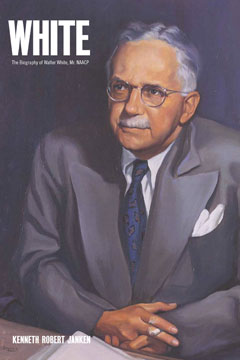Charles Waddell Chesnutt and the Solution to the Race Problem
Negro American Literature Forum
Volume 3, Number 2 (Summer, 1969)
pagess 52-56
June Socken
Charles Waddell Chesnutt, the first American Negro short story writer and novelist of recognized professional quality, squarely faced the problem of Negro-White relations in America. Although his short story “The Wife of His Youth” (1898) and his novel The Marrow of Tradition (1901) have been credited as bold treatments of the race issue, particularly miscegenation, all of the implications of Chesnutt’s fiction have not been explored. The Negro’s acceptance of the white man’s culture as well as the identity crisis of the mulatto are two crucial themes that have not received adequate attention. Chesnutt’s non-fictional writings, in which he stated quite forthrightly that total assimilation was the only solution to the race problem, have not been studied at all. The following pages will attempt to describe and explore some of the perceptive, and still relevant, ideas put forth by Charles Chesnutt.
Born in Cleveland in 1858, but raised and educated in North Carolina, Chesnutt was the prototype of the self-made man. Fair skinned, he consciously identified himself as a Negro and became a teacher and then principal of a colored school in North Carolina. Later, he trained himself to become a stenographerand lawyer; at the age of twenty-five, he moved back to Cleveland. His hometown, he believed, judged men according to their merit ana not their color. Chesnutt always wanted to become a writer but practiced stenography and law so as to earn a living, thus providing himself with the means to write. His plan worked, and by 1900, Chesnutt was devoting himself largely to writing. However, the novels he produced during the 1900-1905 period did not sell sufficient copies to allow him to remain a full-time writer. He had to return to stenography after 1905 in order to earn a living.
Miscegenationwas the dominant theme in Chesnutt’s fiction. However, white audiences and critics who repeatedly discussed this fact failed to appreciate that Chesnutt was satirizing the mulattoes, his major characters, as well as the intolerant whites.He mocked the light-skinned Negroes’ aping of white man’s habits; he poked fun at the mulattoes who imitated all of the white American’s fashions and prejudice The protagonists in Chesnutt’s stories “A Matter of Principle” and “The Wife of His Youth,” for example, formed an exclusive society called the Blue Vein society (the members being so light that you could see the blue veins in their faces.); the purpose of the group was to remove themselves from the mass of black men and to create a mulatto aristocracy. This first group of assimilated Americans, Chesnutt seemed to be saying, still believed in the superiority of the white man’s value system; they had not broken out of the cultural restraints sufficiently to recognize that the white man’s value; were not American or human values. The mulattoes lauded whiteness and deplored blackness because they lived in a white society that did so. They believed, based upon their experience, that the only way to advance was to become whiter; the thought that two races, one black and one white, could live side by side harmoniously was beyond their vision of possibilities.
Chesnutt’s reproof of his mulatto characters was often gentle, but nevertheless, firm. The rich mulatto restaurateur in “A Matter of Principle” lost the opportunity to marry his daughter to a substantial Negro Congressman who was light skinned (and therefore an appropriate match) because of a case of mistaken identity; the restaurateur thought that a black-skinned Negro bishop was the Congressman, and thus hurriedly prevented the meeting between the suitor and his…
Login to read the entire article here.



